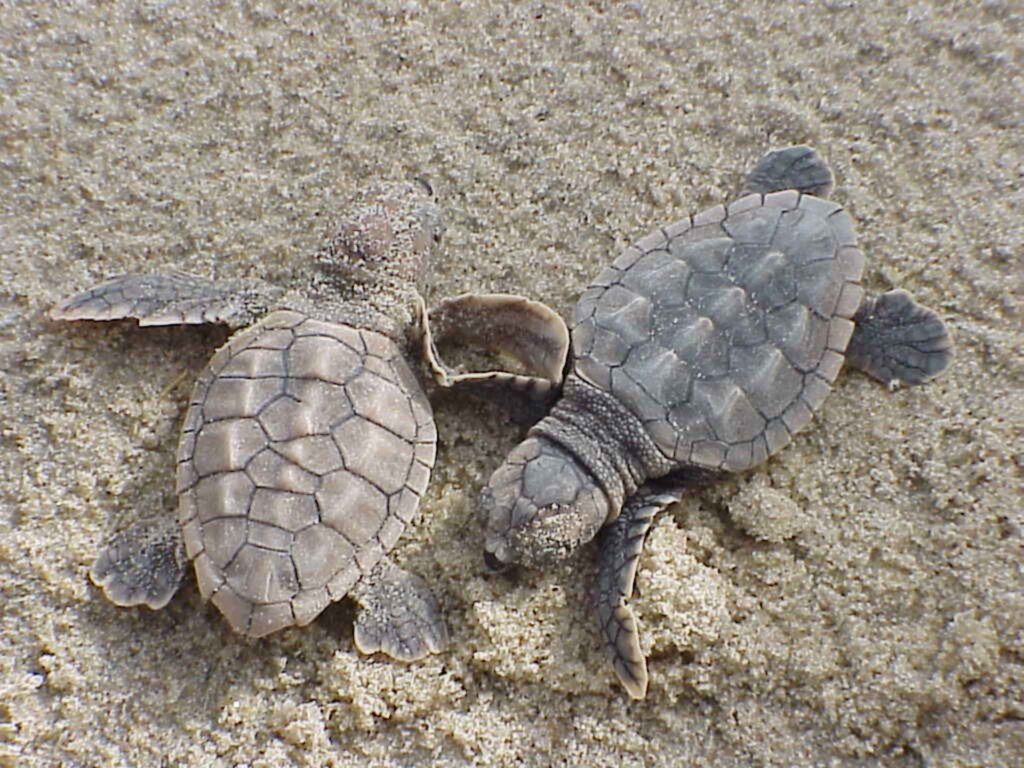By Lexie Beach, Sea Turtle Conservancy
Nesting season officially kicks off on May 1 throughout the state of Florida, where about 90% of sea turtle nesting in the U.S. takes place. Whether you’re a Florida resident or simply stopping by for summer vacation, this information from the Sea Turtle Conservancy (STC) will help you get the most out of our beautiful beaches while also being considerate of nesting sea turtles and hatchlings.
Share these tips with your beach-loving family and friends to ensure that Florida’s beaches can be safely and responsibly enjoyed by all.
Artificial lights: Keep them dim!

Nearly every coastal city or county in Florida has an ordinance in effect during nesting season that places limits on lights visible from the beach. When visiting the beach at night, leave portable lights (flashlights, cell phones) at home.
Prevent interior light from escaping by closing window coverings, using window film and moving light fixtures away from the windows. Remove purely decorative lights from your property and turn off exterior lights when they are not in use.
Lights on any beachfront property should follow these three rules: Keep it low, keep it shielded and keep it long. To learn more about wildlife-friendly lighting, visit Sea Turtle Conservancy’s website.
Sandcastles and holes: Fill them in!
While playing in the sand makes for a fun beach activity, flat beaches are essential for nesting sea turtles and hatchlings to make it safely to and from the water. If left unfilled, holes are extremely dangerous to both sea turtles and humans.
If you dig a hole or see one that was left behind by someone else, please fill it in. And after you build a sandcastle, take a picture to remember it and then knock it down and flatten the surrounding sand.
Beach furniture: Bring it in!
Beach furniture and other recreational equipment (e.g., cabanas, umbrellas, canoes, small boats, bicycles) can reduce nesting success and increase false crawls on nesting beaches when left out overnight. Do your part by “leaving only footprints” at the end of the day and bringing everything inside.
Some beaches now have “leave no trace” ordinances, which require items to be removed daily from the beach each night. Even if your beach doesn’t have an ordinance, you can still leave no trace at the end of your beach day by removing all trash and beach equipment.
Trash and food: Throw it away!

Raccoons, coyotes and stray dogs are easily attracted to beaches by what we leave behind. Unfortunately, they are also responsible for the destruction of thousands of sea turtle eggs each year. By leaving the beach clean, you can help prevent predators from preying on sea turtle eggs and hatchlings.
Human activity on nesting beaches can disrupt sea turtles, so the best way to responsibly witness a nesting sea turtle is by attending a permitted, guided sea turtle talk. STC’s Turtle Walks take place in the Archie Carr National Wildlife Refuge, starting at the Barrier Island Center in Melbourne Beach.
Walks are conducted by STC on Monday, Tuesday, Thursday and Friday nights in June and July. Space is limited to 20 people per night. Cost is $20 per person. Click here to reserve your spot!
Lexie Beach has worked at the Sea Turtle Conservancy (STC) since 2013. She is responsible for STC’s communication activities, social media, marketing, fundraising, partnerships and event planning. She also focuses on promoting the “Helping Sea Turtles Survive” license plate in Florida. She lives in Orlando with her husband and two rescue dogs.
Sign up for The Invading Sea newsletter by visiting here. To support The Invading Sea, click here to make a donation. If you are interested in submitting an opinion piece to The Invading Sea, email Editor Nathan Crabbe at nc*****@*au.edu.



